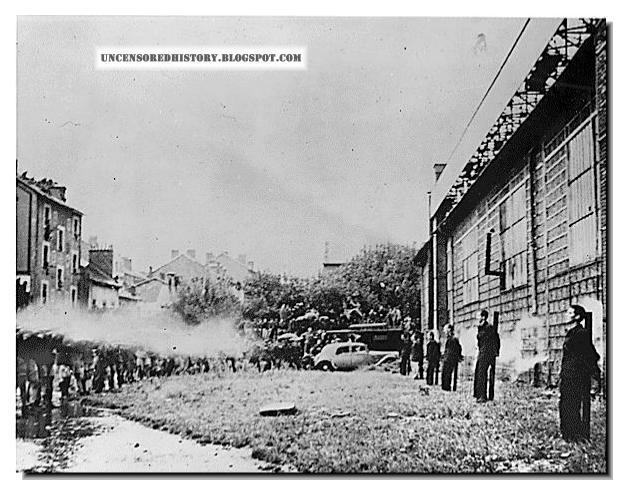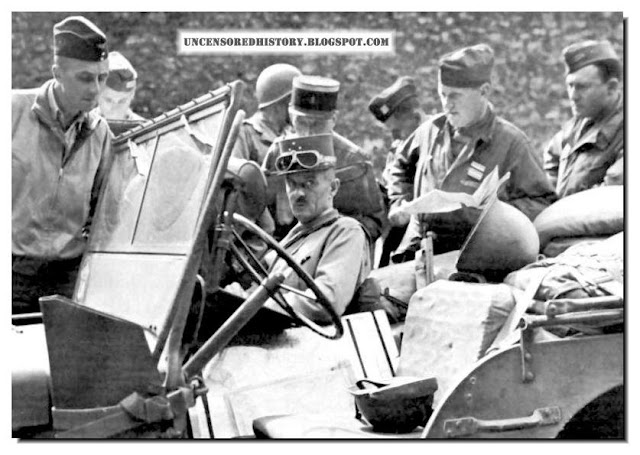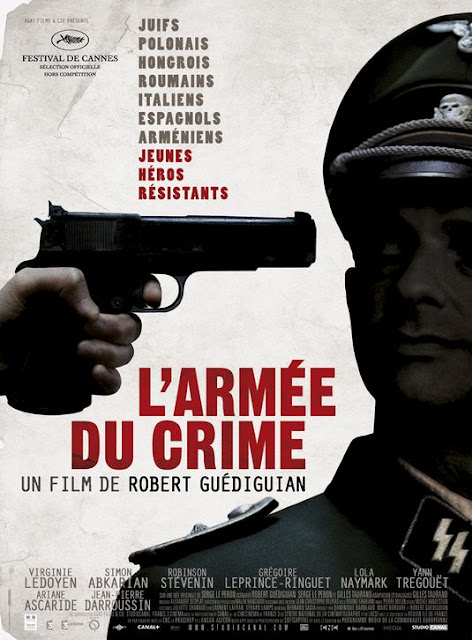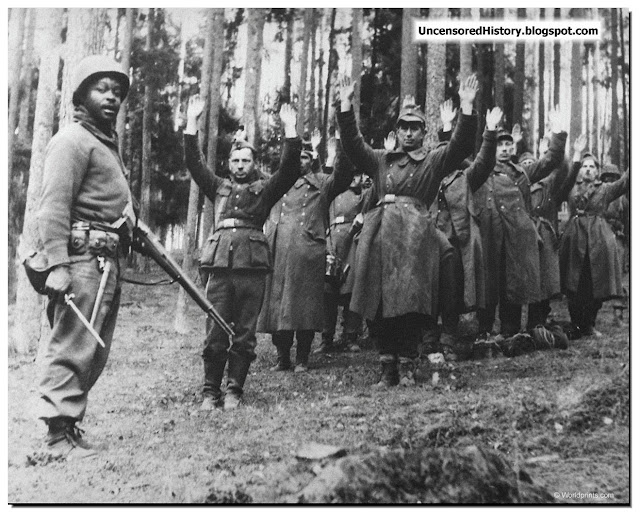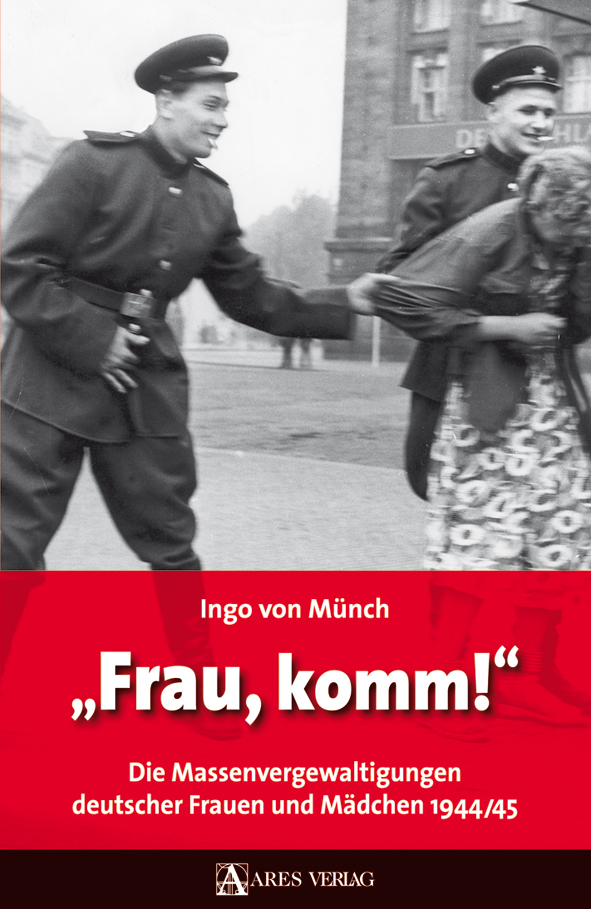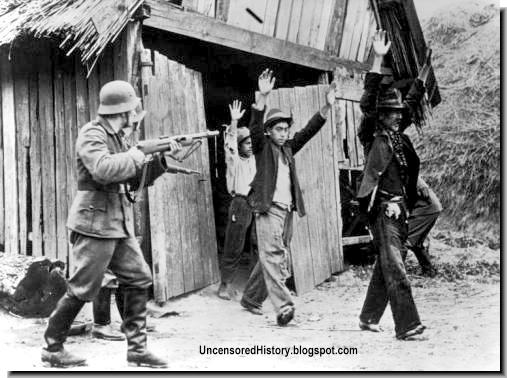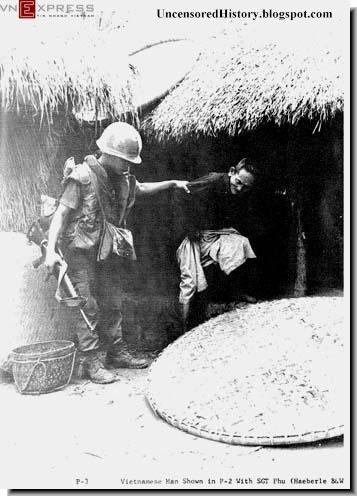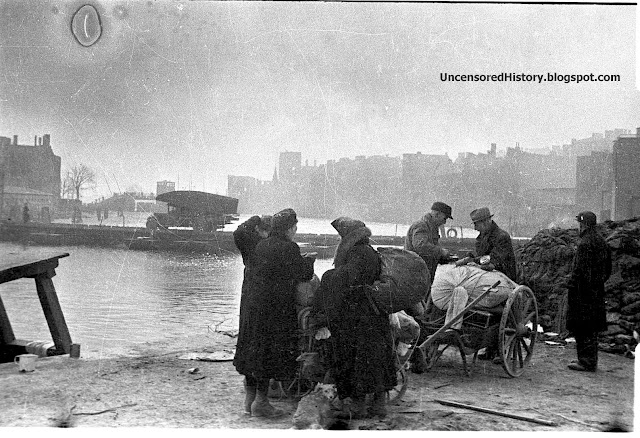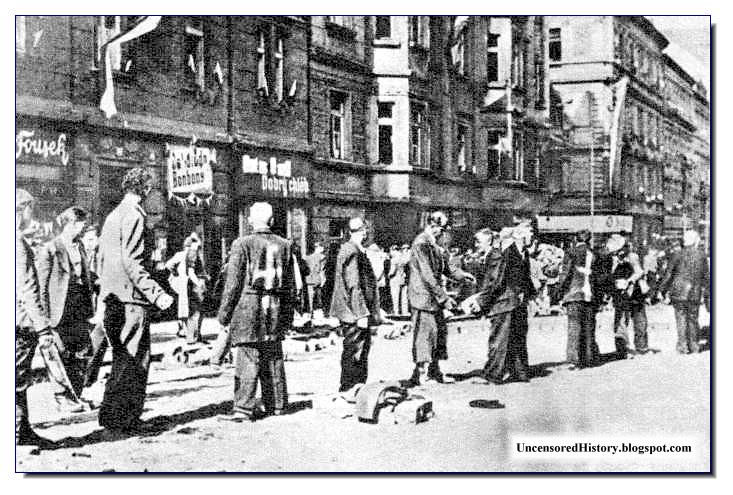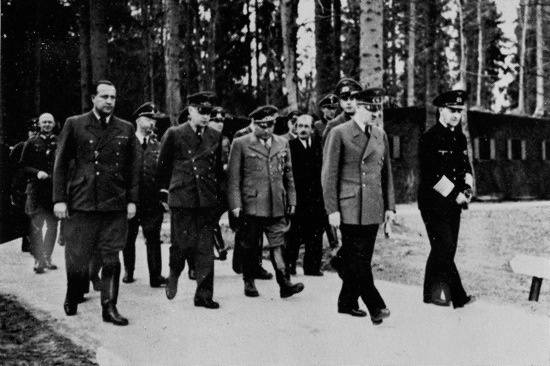The record of the French is hardly any better: the Resistance and partisan war, which no clauses of The Hague protected; innumerable assassinations of German soldiers, stabbed in the back by invisible enemies; even massacres of prisoners who were protected by the Geneva Convention, such as the one that took place at Annecy (Savoy) on August 18th, 1944, and others in French camps after 1945, to such an extent that the International .Red Cross was so disturbed that it even roused President Eisenhower himself.
On September 2, 1944, 80 German POW were massacred by the French forces at Annecy.
Massacre at Andelot. 12th September 1944. The third Battalion of the French regiment "Marche du Tchad" Leclerc at the village of Chaumont, in Haute Marne Andelot. About 500 German prisoners of war were gathered in a barn. A tank commander gave the order to the tank to shoot into the crowd. Limbs flew through the air. Those not yet dead, was massacred with machine guns.
40 German soldiers killed brutally in Tulle on 8 June 1944 by the French Maquis Resistance Movement. The small German garrison at Tulle on the 7th June 1944 was attacked by Bolshevik partisans. Even after the fighting ended, the French maquisards then shot captured German soldiers. The "Partisans-Francs-tireurs" knew exactly what they were doing. Among them were Polish, Spanish Reds, and also four-uniformed Soviet Bolsheviks. After completion of the fighting, they shot more than 12 German prisoners below the cemetery, after this the Chateau Lorraine Abbot had granted absolution. Another mass execution took place in the woods, where another priest before the execution of about 20 German prisoners granted absolution. A total of about 120 unarmed German soldiers were shot after their capture. The bodies were been mutilated in an inhuman way.
Agony of Freudenstadt. In April 1945 the city was severely affected by bombing and artillery shelling by French troops under General Jean de Lattre de Tassigny . German troops in advance had set up a roadblock in the Murg Valley, and shot some French tanks. Freudenstadt was pounded by about 16 hours of artillery. It was also hit by American bombers. The main water line broke and there was not enough water available to clear the many fires that broke out. Approximately 600 buildings, 95% of the total core city were on the night of 16th to 17th April 1945 by direct or indirect influence destroyed and 1,400 families rendered homeless.
During the subsequent invasion by the French troops, there was considerable violence, rape and abuse. Many of the buildings that had been spared were claimed by the French occupiers. Many families lived in makeshift basement. Freudenstadt is just one example of the serious mistreatment of the civilian population by the colonial troops of the British and French. Götz Aly pointed out, that "every village in southwest Germany would report rape by black soldiersm" They were "no different than the Russians"
General Leclerc on May 8, 1945 in Bad Reichenhall had twelve French volunteers of the 33rd Waffen-SS Division "Charlemagne" shot "without trial.
It is well known that the French General Leclere, on 8 May 1945, the date of the surrender of the German Wehrmacht, shot twelve French soldiers in Bad Reichenhall, they belonged to the Waffen-SS Division "Charlemagne," they were shot without trial - a war crime. Later it was known that Leclerc’s division, on the road from Normandy to German Brechtesgarden had committed many war-crimes. None of these war-crimes were ever brought to court. Contrary General Leclerc became a hero in France after WWII.
French historian Daniel Guérain investigated into what happened. During his investigation he interviewed witnesses and visited the German and French sites of the fighting. He wrote down his findings in the book "the other side of the legend, history of liberation" . The historian reports of eye witnesses, also reflected in the French Division. They tell of numerous, often gruesome murders of German prisoners, especially members of the Waffen-SS. They said that, for example, soldiers of the Division Leclerc doused German prisoners of wars with gasoline and watched them burning. At the airport, Le Bourget, near Paris, there had been a massacre of hundreds of German prisoners of war who were crushed by Leclerc tanks .
Lieutenant Robert Galley was particularly brutal while this happened. The French soldier Albert Bisson describes what happened at Andelot (Haute-Marne), during violent struggles between French and German troops. . The French suffered losses, but then broke the German resistance. … A large number of "Boches" as the soldier called themselves surrendered As they approach another 500 prisoners of war. Lieutenant Galley said "Wait!" ... Feuer!.“ He drove the Germans in a barn, over his microphone and commands: "Turn to the left. Stop! Hand grenade! Fire!. " The grenade exploded in the middle of the ... the Boches. The splinters tear their bodies, body parts stuck to the beams of the barn. We shoot those who survive with machine gun, all still living. Today is the day of vengeance! " Although Lieutenant Galley was guilty of war crimes and, as Director of Studies Pohl, he boasted openly on television, he was a minister under de Gaulle, Pompidou and Giscard d'Estaing and was active as treasurer of the party of French President Chirac.
French Treatment Of German POW
(http://www.whale.to/b/walsh11.html)
Source
Relevant Movie
(http://filmsweep.blogspot.in/2011/03/army-of-crime-2009-robert-guediguian.html)
